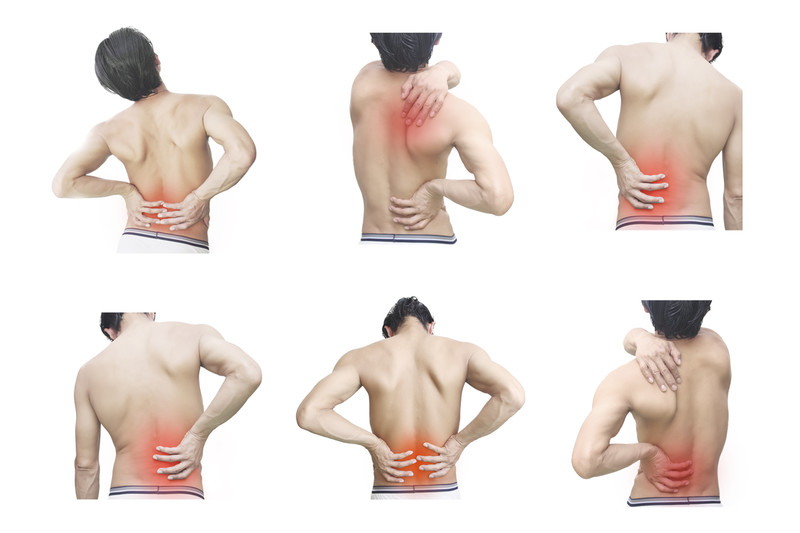Every purchase made online is encrypted with a high level of security you’ve come to expect. Your private information is never shared nor sold, so you can buy with confidence. You can also visit our store if you are in the St. Louis area.

Every night you go to bed to relax your muscles and rest your body. However, if you do not follow certain sleep strategies, it’s possible to wake up the next morning in pain.
Whether you are accidentally aggravating an old injury or causing a new one, it is possible to sleep wrong. The position that you lie in can cause anything from a stiff neck to a sore back, and it’s possible to prevent it when you’re armed with the right information.
Table of Contents
Choosing the Right Mattress
The first step in ensuring a comfortable, pain-free night of sleep is ensuring that you choose the right type of mattress for your needs. Those with pre-existing back pain issues should consider a firmer mattress, which offers more support for the spine. The one exception is for people who sleep on their sides. Even if you have back pain, sleeping on your side may require a softer mattress choice to allow the body to sink into the surface and provide better support in that instance.
Getting Into and Out of Bed
Sleep spinal health is affected by how you get into bed at night. You should learn the best way to crawl into bed each night so that you avoid unnecessarily twisting your spine and you minimize the pressure you put on your spinal column.
Sit on the edge of the mattress and slowly lower your upper body onto your side while simultaneously bringing your feet onto the bed. Tighten your abdominal muscles and roll onto your back. Keep your hips and back in line to prevent twisting. Straighten your legs to lie flat.
To get out of bed, roll back onto your side, bending your knees as you do. Slide your feet off of the bed and swing them towards the floor as you push with your hands into the mattress to raise your upper body into a sitting position.
Proper Position for Sleeping on your Back
If you prefer to sleep on your back, you should support your body using pillows at several pressure points. The pillows will prevent the unnecessary pressure on sensitive areas such as the spine.
When lying on your back, ensure that you use a pillow that keeps your head at an equal height as the rest of your body. Some people find it comfortable to place a pillow in the curve of the spine for lower back support. Additionally, you may wish to arrange a pillow or two beneath the crook of your knees to help hold the spine in a neutral position.
Proper Position for Side Sleep
If you feel more comfortable sleeping on your side, then you should make an effort to keep your hips and neck aligned to prevent back or neck pain. Do this by using a medium-sized pillow to keep your neck parallel with the mattress. Some individuals find it helpful to roll a small towel and place it under their neck.
To support your lower back, place a small or medium pillow between your knees. This effectually keeps your legs an even hip-width apart and releases unnecessary strain on your spinal cord.
Sleeping on your Stomach
If you have back pain, sleeping on your stomach is not recommended due to the strain that doing so can place on your back and neck. However, if you are unable to sleep in any other position, then you can reduce the pressure by using only a thin pillow – or no pillow at all. This will keep your neck in line with the rest of your body and decrease the chance of neck pain. Place a small pillow under your belly and pelvis to keep your spine in a neutral position. It is also a good idea to bend one knee and bring it up to your side. Place a pillow under the knee to relieve lower back strain.
Use of Adjustable Beds
One of the best options for those with back pain is to utilize an adjustable bed. While these beds offer many utilitarian benefits, such as the ability to sleep in any position and being able to sit up to read or eat in bed, they also offer medical advantages, particularly for those suffering from osteoarthritis, spinal stenosis, and joint pain.
Osteoarthritis: Adjustable beds provide a supportive surface that redistributes the body weight evenly. Since you can raise both your head and feet, you can ease the pressure on your spine that cannot be addressed on a regular mattress.
Spinal stenosis: When on a flat mattress, individuals with spinal stenosis tend to find the most relief when lying on the side with knees pulled up and in towards the hips. However, using an adjustable bed can help relieve pain easily. Adjust the bed so that the head and the knees are raised, and pressure on the nerve can be minimized or eliminated completely.
Joint pressure: Adjustable beds can be used to raise or lower the head or feet in such a way that is most comfortable for the individual. Since everyone is different, the flexibility of such a mattress effectively controls pain associated with joint pressure for each individual user.
Adjustable beds are also capable of assisting with other health problems. They can promote proper circulation and reduce strain on the heart, which in turn can improve problems related to sleep apnea and acid reflux.
Getting a Good Night’s Sleep
If spinal problems keep you up at night or appear every morning after a solid night’s sleep, you do have the ability to relieve the pressure. Adopting better sleep habits and improving one’s mattress choice can be all it takes to achieve a pain-free sleep experience.
